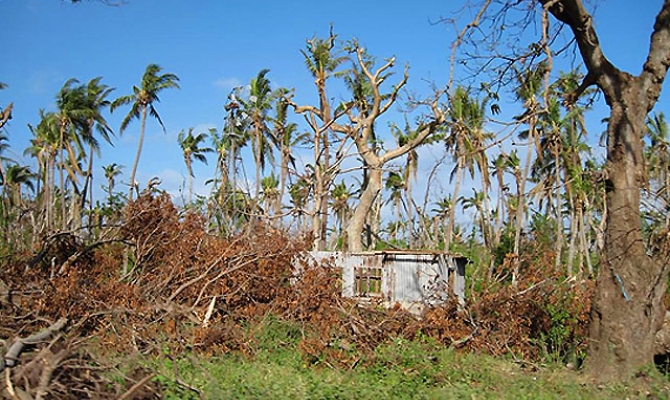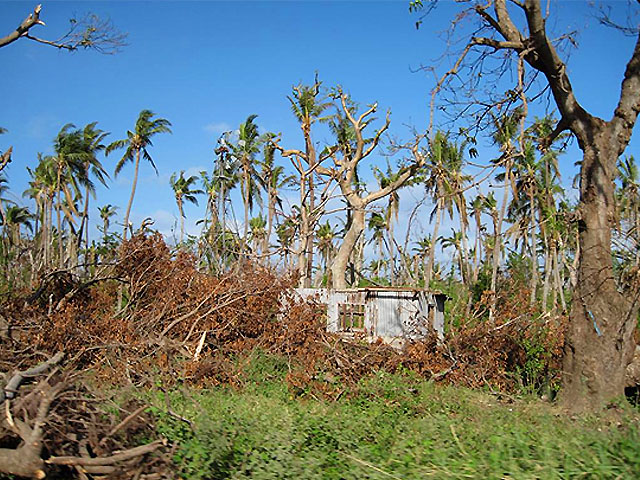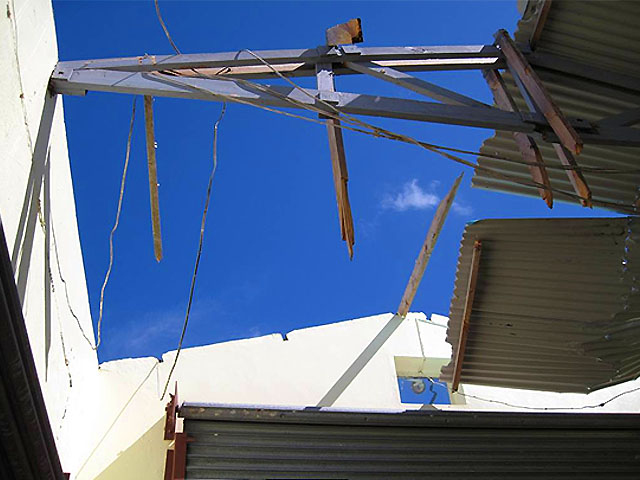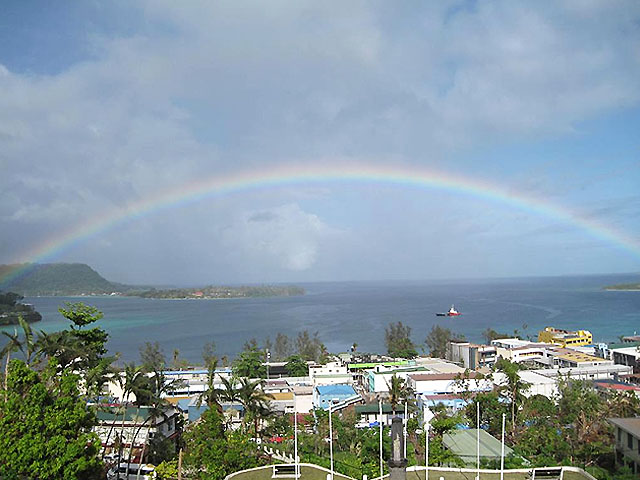
Climate Change Resilience
Severe Tropical Cyclone Pam is likely one of the strongest cyclones to make landfall in the Pacific Islands region.
A tropical low formed on the 6th of March 2015 near the Solomon Islands, 800 km north of the Torres Group. Favourable conditions allowed the system to develop and intensify, and by the 9th it had reached cyclone strength. Cylone Pam came within 45 km of Port Vila, Efate, Vanuatu at 11pm on the 13th, made landfall on Erromango at 5am on the 14th, and passed within 20 km of Tanna at 8am on the 14th. At its peak the maximum sustained winds were in excess of 250 km/hr, with gusts in excess of 320 km/hr.

There were 11 fatalities in Vanuatue as a result of Cylcone Pam, and severe damage was sustained on the islands of Efate, Erromango, and Tanna. The draft rapid Post Disaster Needs Assessment estimates that 65,000 people were displaced from their homes, and that approximately 15,000 buildings were damaged or destroyed.
Preliminary estimates place the total economic value of effects caused by Cyclone Pam in Vanuatu at nearly US$400 million or nearly 50% of Vanuatu's GDP.
 Damage to the roof of the Bauerfield Meteorological Observation Station building. Photo: Tommy Moore/SPREP
Damage to the roof of the Bauerfield Meteorological Observation Station building. Photo: Tommy Moore/SPREP
Greater loss of life and damages were prevented due to the successful implementation of Vanuatu's Early Warning System and Disaster Risk Management plans. Initial advisories were issued 3 days in advance, and the first cyclone warnings were issued 2 days in advance. As the storm approached Efate hourly notices were sent out by SMS, internet, phone, HF radio, and word of mouth, and warnings continued even as Cyclone Pam caused severe damage to the main Vanuatu Meteorological and Geohazards Division building and observations equipment.
Cyclone Pam damaged communications systems between islands, complicating and delaying initial assessments and relief work. The government of Vanuatu led, and continues to lead, relief efforts with the assistance of Australia, New Zealand, Fiji, the European Union, the United Nations, NGO's, intergovernmental agencies, and other partners.
A rapid Post Disaster Needs Assessment has recently been completed, which will help in mobilizing additional resources for recovery and reconstruction.
 Port Vila. Photo: Tommy Moore/SPREP
Port Vila. Photo: Tommy Moore/SPREP
A tropical low formed on the 6th of March 2015 near the Solomon Islands, 800 km north of the Torres Group. Favourable conditions allowed the system to develop and intensify, and by the 9th it had reached cyclone strength. Cylone Pam came within 45 km of Port Vila, Efate, Vanuatu at 11pm on the 13th, made landfall on Erromango at 5am on the 14th, and passed within 20 km of Tanna at 8am on the 14th. At its peak the maximum sustained winds were in excess of 250 km/hr, with gusts in excess of 320 km/hr.

Remnants of a house in Tanna. Photo: Tommy Moore/SPREP
There were 11 fatalities in Vanuatue as a result of Cylcone Pam, and severe damage was sustained on the islands of Efate, Erromango, and Tanna. The draft rapid Post Disaster Needs Assessment estimates that 65,000 people were displaced from their homes, and that approximately 15,000 buildings were damaged or destroyed.
Preliminary estimates place the total economic value of effects caused by Cyclone Pam in Vanuatu at nearly US$400 million or nearly 50% of Vanuatu's GDP.
 Damage to the roof of the Bauerfield Meteorological Observation Station building. Photo: Tommy Moore/SPREP
Damage to the roof of the Bauerfield Meteorological Observation Station building. Photo: Tommy Moore/SPREPGreater loss of life and damages were prevented due to the successful implementation of Vanuatu's Early Warning System and Disaster Risk Management plans. Initial advisories were issued 3 days in advance, and the first cyclone warnings were issued 2 days in advance. As the storm approached Efate hourly notices were sent out by SMS, internet, phone, HF radio, and word of mouth, and warnings continued even as Cyclone Pam caused severe damage to the main Vanuatu Meteorological and Geohazards Division building and observations equipment.
Cyclone Pam damaged communications systems between islands, complicating and delaying initial assessments and relief work. The government of Vanuatu led, and continues to lead, relief efforts with the assistance of Australia, New Zealand, Fiji, the European Union, the United Nations, NGO's, intergovernmental agencies, and other partners.
A rapid Post Disaster Needs Assessment has recently been completed, which will help in mobilizing additional resources for recovery and reconstruction.
 Port Vila. Photo: Tommy Moore/SPREP
Port Vila. Photo: Tommy Moore/SPREP